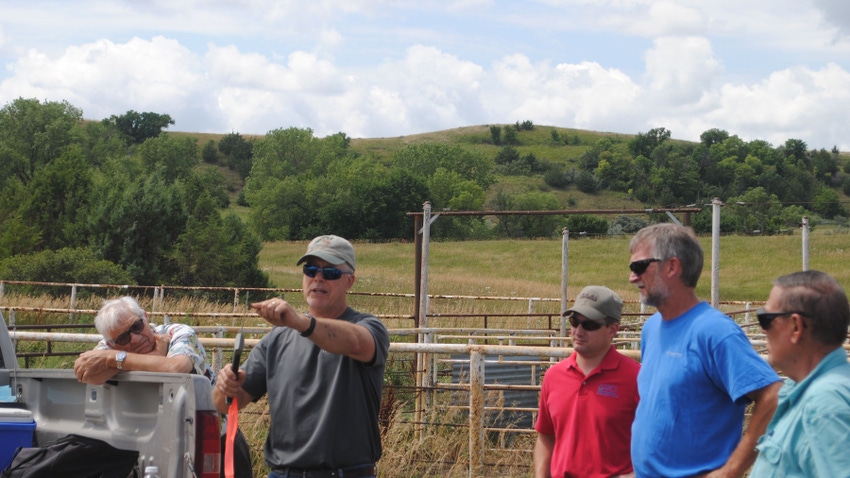
It can be a lifesaver for tree seedlings. A fabric weed barrier, once the gold standard application — especially in arid High Plains planting situations — has both positive and negative effects.
When we were raising Christmas trees on our farm in the late 1980s and early 1990s, there were several drought years that affected our seedling plantings.
Having started in the severe drought of 1988, we initially installed drip water lines with small emitters to save on the labor of hand watering. The problem with emitters was that we were not only watering the trees, but also any grass and weed seed in the soil around those young seedlings. Weed control around those small trees became a problem.
The answer came a couple of years later when we began installing a 6-foot-wide fabric weed barrier on new plantings. It was thought at the time that the fabric would break down through weathering after a few years.
Subsequently, we also installed the same fabric on several new windbreak plantings around our farm, consisting of eastern red cedar and jack pine. Survivability went up on those plantings, and weed challenges went down. The weed barrier was a big hit around our farm.
There is a problem
However, as those plantings grew and the circumference of the tree trunks increased, we learned of a downside — tree girdling. The fabric did not break down as quickly as advertised. This meant that the weed barrier must be installed properly, and there is management of the fabric as the trees grow. This is a lesson we learned the hard way.
In the early days in our area, we installed much of the fabric ourselves by hand, as there were few contractors at the time. We planted the trees at the desired spacing, leveled the tilled soil around the newly planted trees, then rolled the fabric over the new seedlings.
Wherever there was a visible bump in the fabric, we made a single slit in the fabric with a knife and simply pulled the tree through the slit. That was it.
The problem with that method was that as the tree grew, the fabric could girdle the trunk and cause issues with the health of the growing tree. Today, we know that newly planted windbreaks with a fabric weed barrier should have the fabric pinned down with a large steel pin or large staple within 12 inches of the seedling — to help direct water running on the fabric toward the seedling, not away from it.
Secondly, slits in the fabric where the trees are pulled through by hand or by a contract installer need to be cut into an “X” pattern, not as a single slit, to avoid fabric rubbing on the seedling. Do not cut large holes around the seedling, because it invites weeds to grow and dries out the soil, defeating the purpose of the weed barrier.
Older plantings
For landowners with older windbreaks who have installed fabric mulch, it is necessary to make new cuts around the growing trees to help avoid girdling issues. A second choice is to remove the weed barrier altogether once the trees are 5 years old or older.
This can be done by hand, preferably as close to that five-year mark as possible, using a long-handled, hooked knife to help reach under the tree. There also are machines that have been developed, mounted on a skid loader, to make the job much easier.
A weed barrier is a lifesaver, and in many dry areas, it improves the overall survivability of new plantings. However, tree planters need to understand the downside of this tool and be prepared to manage it as time goes by.
For more information on managing fabric weed barriers, contact your local state forest service or rural forestry professional.
About the Author(s)
You May Also Like






